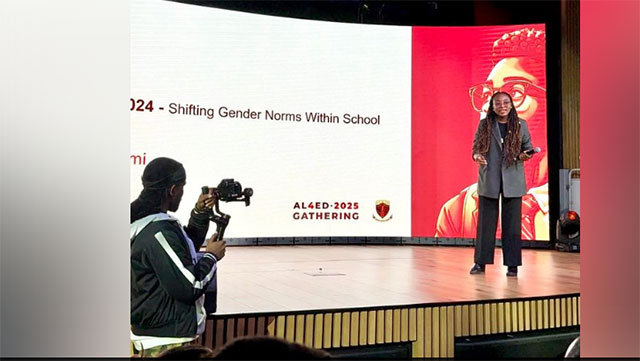Copyright forbes

Connection to hara in the lower abdomen, gives rise to an intuitive connectedness with life itself that brings vitality to our actions and is vital to leadership presence and wisdom. Chosei Zen archives “ ‘Chest out, belly in’…a nation capable of taking this injunction as a general rule is in great danger.” So begins Karlfried Graf Dürckheim’s classic treatise on Hara – The Vital Centre of Man. He’d heard this quote in Japan while training in Japanese archery (i.e., kyudo) and came to penetrate its truths. These truths are even more poignant today, as they point to the source of the great dangers we’ve put ourselves in where runaway greed and fear are dangerously collapsing democracies, destroying ecosystems and turning AI into an arms race. Otto Scharmer characterizes the source of such dangers in terms of three great divides: a spiritual divide within ourselves, a social divide from others and an ecological divide from nature. Even more simply, the second two follow from the first—our disconnection from who we truly are. While it’s common to look “out there” for the blame and cure to our issues, the disconnection from self resides “in here” and is manifest in our very posture. When we function from a head that is not listening to or one-with our ground of being in the lower abdomen—i.e. hara—we can get lost in the ego’s confusion and snagged by greed and fear cycles that have no bounds. Turning this around doesn’t happen through words or concepts, but by physically turning around our posture and reconnecting with hara. The personal benefit to leaders is being able to meet chaos and difficulty with coherence and centeredness, bringing greater wisdom to one’s actions. The collective benefit from a critical mass of coherent, connected leaders is being able to evolve our social, political, and business systems with greater wisdom. Reconnecting with hara is both vitalizing to leaders now and vital to our collective future. What Is Hara? What is this hara, and how does this Japanese term translate to truths for all human beings? Ken Kushner Roshi, who has made hara central to his lifetime of teaching, defines hara as the “unification of a person’s physical, psychological and spiritual dimensions.” While head is the center of thoughts and heart is the center of feelings, hara is the center of our physical self, our ground of being or life source. It is literally our umbilical to life, the source of creation, and the womb from which life arises. Anatomically, the hara hosts our earliest developing enteric nervous system that discerns what matter from “out there” can fuel our matter. Long before we develop an ego, which gives rise to the sense of a separate self, this center is connected and online. The enteric nervous system produces 95% of the body’s serotonin, known to regulate mood and a sense of well-being. Also arising in the hara is a whole host of bacteria-—the gut biome—that, at best, becomes an adaptive, coherent symphony among bacterial buddies both inside and outside our body, that contribute enormously to our overall health. MORE FOR YOU The vagal nerve of the parasympathetic nervous system runs through the hara with at least four times as many signaling pathways to the brain as it receives from the brain in what’s known as the gut-brain axis. Long, slow exhales regulated from this area stimulate the parasympathetic nervous system, relaxing the body and slowing down thought. Hara is also host to the lumbar sacral central nervous system; motoneurons in this region regulate movement of the lower body. When head and hara are in coherence, our walk matching our talk is more than metaphor. Energetically, the hara is associated with the lower chakras related to survival, sexuality and creation, our most powerful instincts or urges. For many centuries, Eastern traditions, from yoga to Chi Gong and Tai Chi, developed breathing, postural and movement techniques to cultivate energy in the hara. Such techniques became central to the fighting arts that emerged in these cultures, including the Samurai culture of Japan. They are passed to us today in various martial and cultural arts, which are Ways (“Tao” in Chinese, “Do” in Japanese) for the development of the connected human being, as in aikido, kyudo or kendo. What connection means in this context is not only internal, but also according the Way of things. In other words, the energetic connection of hara functions outside our body as well as inside. It enables us to pick up the beat of a song—or the beat of life—and dance with it. The Cause Of Disconnection And Source Of Reconnection What disconnects us from this vital center is tension in the body. That tension has many sources such as stored trauma, distancing ourselves from the gut punches of life, bracing for disappointment, burying fears and feelings, all of which fuel and are fueled by the vicious cycle of living in our heads. If, for even a few seconds, you mimic the standard of strength or beauty that both men and women have labored under—“chest out, belly in”—you’ll feel how it puts tension into the body, sucks energy up into your head and shoulders, and away from your ground of being in the hara. Contrast that state with what it feels like to be more connected to hara through the following breathing exercise. Step 1. Stand aligned in gravity, with your hips are squarely above feet, your shoulders above your hips and your ears above your shoulders. Micro-bend your knees to feel more rooted into the earth and let your peripheral vision expand to 180-degrees, as if you’re seeing through your ears. Breathe quietly in and out through your nose for 30 seconds. Regulating breath from the lower body develops the hara. As inhale turns to exhale, the subtle gesture of extending big toes into the earth sets the hara. Exhaling slowly down, as if through the hara and big toes back to ground, builds energy and presence emanating from this center. from Resonate, illustration by Mary Michaud Step 2. On your next inhale, let your hands drift up to your solar plexus, palms up, as if the inhale arose on its own from the ground (Figure 1, left). Keep your shoulders relaxed. Step 3. As inhale turns to exhale, turn your palms to the ground and extend your big toes into the earth, as if to plug them in. Still breathing through your nose, exhale down through your hara, through your feet, deep into the earth (Figure 1, right), making your exhale 3-4 times longer than your inhale. Repeat Steps 2 and 3 for several breaths and then stand quietly, placing your hands on your hara. Notice what’s changed in your condition. More ways to reconnect with hara are available in numerous writings and videos. But perhaps even in this brief exercise, you felt something of the power and possibility of this grounded presence in leadership. Leading From Hara So closely is hara aligned with natural leadership (which is not the same as positional power), that the Japanese have a saying that roughly translates as, “One without hara is not fit to lead.” From participants in Zen Leadership programs, which center on hara, we’re constantly hearing stories about how hara-presence has resourced them. Cindy, for example, served on a review board for awarding public health grants. The board had just heard a strong proposal presentation that she felt most assuredly should be funded. But one of the other board members, known to be a blowhard, started raising objections and questions totally outside the scope of the proposal, and derailing the meeting. Cindy, normally a quiet voice on this board, felt her hara kick in and spoke with a steadiness that filled the room, suggesting that they take a break and come back to vote on the proposal. She knew this man would not want to lose face in a direct confrontation, but she used the break to speak with him privately, from hara, honoring his dignity as well. “Your concerns, however valid, are beyond the scope of this proposal,” she told him. “This proposal is about as good as it gets.” When the group reconvened after the break, it was he who made the motion to approve. Kristi, a family medicine physician, was standing outside a door, behind which was a patient whom she knew was angry and frightened. A seasoned contractor in construction, he’d suffered a back injury that made him unable to work. She’d not ordered a scan in a timeframe where insurance would have covered it, and now he couldn’t afford it. She mentally rehearsed a standard way of getting through the conversation—maybe a prescription, physical therapy. And then she stopped. Breathed. Dropped into hara and felt a boundless care holding this patient and his difficult situation. When she knocked on the door, the sound itself was calming. “I don’t recall the exact words,” she said later, “But I entered, we joined, and he shifted.” They had a conversation beyond a standard doctor-patient visit and he came away enthused about how he could transform his work into mentoring others in the construction business. He even followed up with her later on how well it was going. Hieu, a bank president known for leading a supportive culture, felt a hara-changing experience closer to home. It was seeded by an exercise in a Zen Leadership course to develop better influencing skills. The exercise enlists a form of somatic empathy where one “becomes the other” and feels into how that person would regard the situation that one wants to influence. He chose his wife as the person he wanted to influence on an important matter and dropped into hara to feel deeply into how she would experience it and what might be her concerns. He was filled with new insights that he later checked out with his wife—did she feel this way? She was overcome with gratitude for being so deeply felt and heard, even in feelings she had never voiced. As he shared with the Zen Leadership group the next day, holding up his wedding ring and speaking of his wife, “We are closer than ever. We are one.” Despite the dangers of our day and all the ways they can trigger us, moments like these are vital and vitalizing to ourselves and others. Moreover, they’re available every day in every interaction where we build the muscle for leading one-with hara. Connected with hara, we’re connected with life. Not only are we better resourced to meet difficulty with the greater wisdom of connection, but we keep seeding connection around us that can phase-shift our systems to greater wisdom. We can’t avoid the dangers already unfolding from having lived in our heads for so long but, leading from hara, we can get to the other side of them. Editorial StandardsReprints & Permissions



